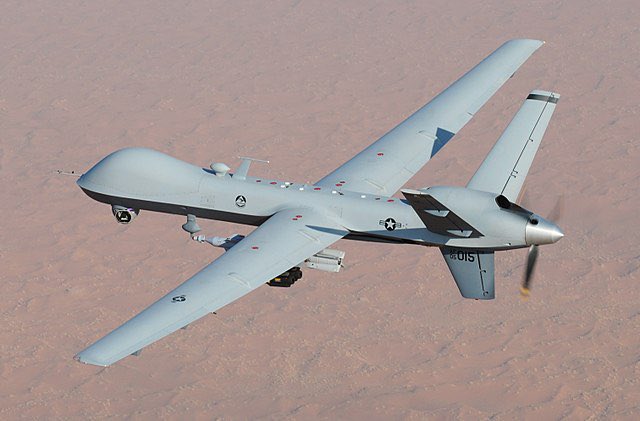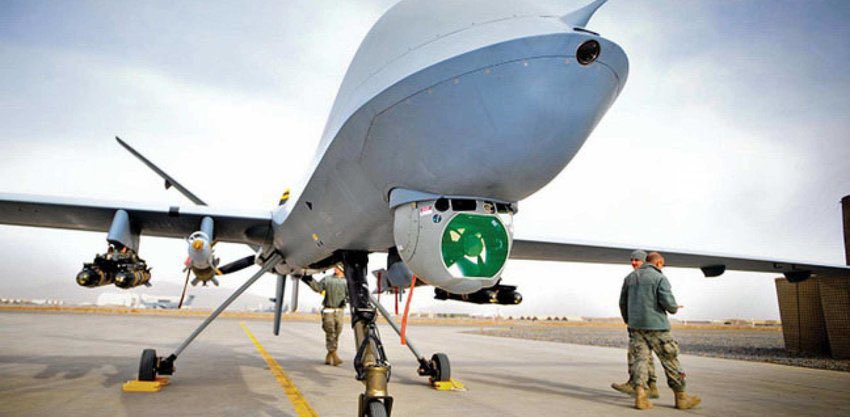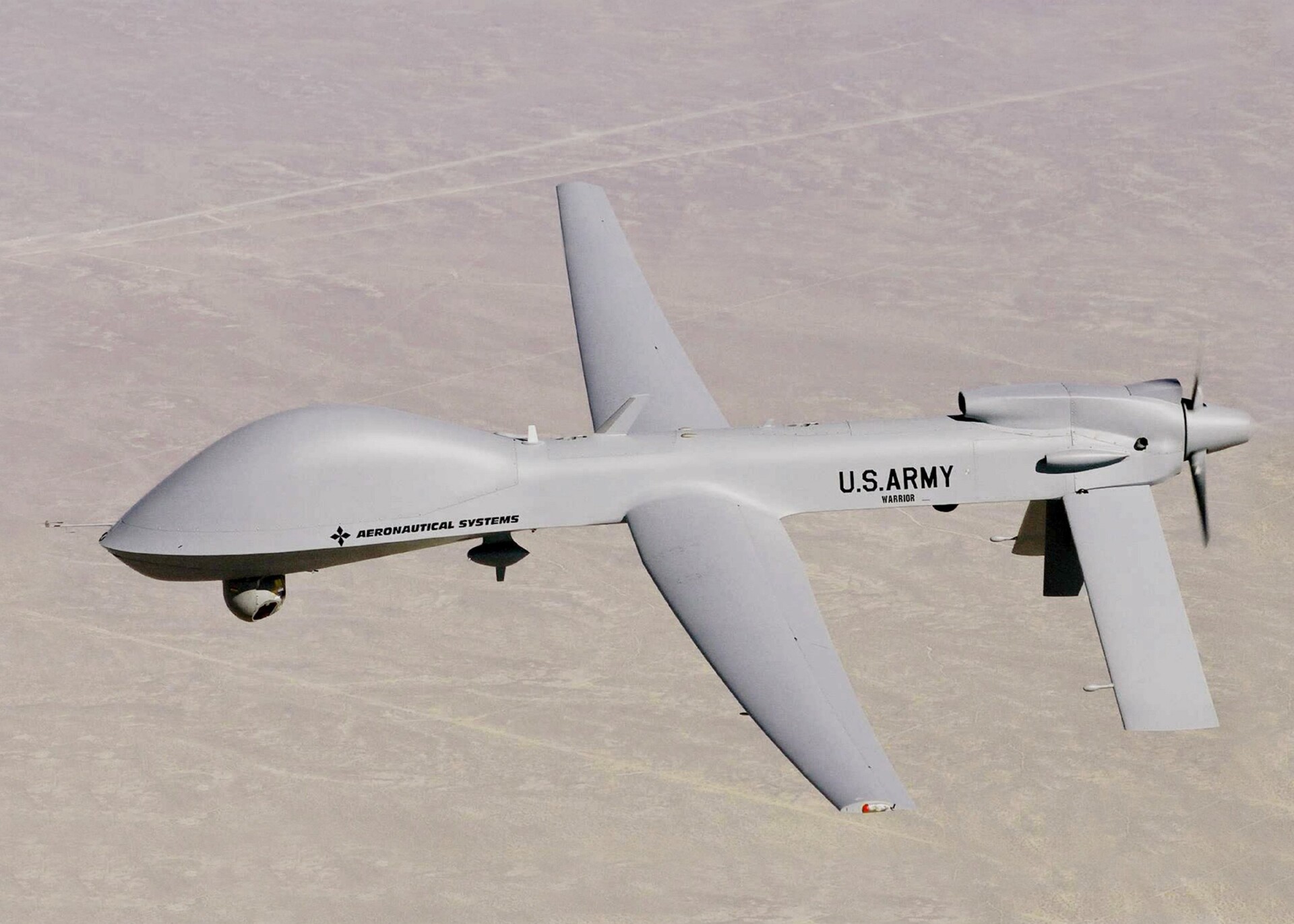“Obsolete and Outdated”: U.S. Army Axed MQ-1C Gray Eagle Drone
Despite the platform’s proven operational track record and its high-endurance ISR and strike capability, the US Army now categorizes the Gray Eagle, developed by General Atomics Aeronautical Systems, as an ageing system no longer aligned with the demands of modern warfare.
(DEFENCE SECURITY ASIA) — In a decision that signals a sweeping shift in US Army doctrine and capability priorities, the service has declared its long-serving MQ-1C Gray Eagle unmanned aerial system (UAS) as obsolete, cutting off further procurement in a move that has sparked both internal resistance and external scrutiny.
Despite the platform’s proven operational track record and its high-endurance ISR and strike capability, the US Army now categorizes the Gray Eagle, developed by General Atomics Aeronautical Systems, as an ageing system no longer aligned with the demands of modern warfare.
On May 1, 2025, US Army Chief of Staff General Randy George and Secretary of the Army Dan Driscoll issued a joint memo that, without ambiguity, marked the end of the Gray Eagle’s future within the force.
“We will cancel procurement of manned aircraft such as the AH-64D Apache attack helicopter and unmanned systems that are obsolete, such as the (MQ-1C) Gray Eagle,” the memo stated.
“Our Army will transition to a more powerful force by integrating new technologies, discarding outdated systems, and removing barriers that hinder victory in an ever-evolving battlespace.”
The decision also impacts several other legacy platforms earmarked for phase-out, including the ageing Humvee utility vehicle, selected variants of the Joint Light Tactical Vehicle (JLTV), and the early-model AH-64D Apache helicopters—platforms that have defined decades of US Army operational dominance.
The cancellation of Gray Eagle procurement forms part of the sweeping Army Transformation Initiative (ATI)—a modernization blueprint designed to pivot the Army towards a multi-domain-capable force structured to meet the threats of peer adversaries like China and Russia.

The ATI, announced concurrently on May 1, is a comprehensive strategy aimed at restructuring the Army’s force composition, modernizing its battlefield technologies, and adapting to the accelerating pace of hybrid warfare and near-peer strategic competition.
Spearheaded by Secretary of Defense Pete Hegseth, the initiative aligns with a sharply-worded April 30 memorandum in which he demanded the Army divest itself of “outdated, redundant, and inefficient” programs to prioritize critical future-focused capabilities.
Though no system was named explicitly in Hegseth’s directive, the reference to halting the “procurement of obsolete systems,” including “outdated UAVs,” was interpreted within defence circles as a clear nod to the phasing out of the MQ-1C.
The Gray Eagle has long been viewed as the backbone of the Army’s MALE (Medium Altitude Long Endurance) drone fleet, designed to conduct long-range surveillance, high-endurance ISR, and armed reconnaissance missions with precision and persistence.
With an endurance of over 27 hours, an operational ceiling of 29,000 feet, and cruising speeds reaching 280 km/h, the Gray Eagle has delivered unmatched aerial persistence in theatres ranging from Iraq and Syria to Afghanistan.
Its sensor suite includes cutting-edge electro-optical/infrared (EO/IR) cameras, Synthetic Aperture Radar (SAR), and ground moving target indicators (GMTI), allowing for robust day-night, all-weather surveillance and target tracking across complex terrain.
The aircraft is also SATCOM-enabled for beyond-line-of-sight (BLOS) operations, making it suitable for wide-area surveillance, multi-domain ISR integration, and targeting in GPS-contested environments.

Armed with up to four AGM-114 Hellfire missiles, the Gray Eagle is capable of executing precise kinetic strikes against time-sensitive or high-value targets, including insurgent hideouts, enemy convoys, and mobile missile launchers.
Its ability to seamlessly integrate with ground-based command-and-control nodes and coordinate directly with manned platforms such as the AH-64E Apache Guardian has given the Army a crucial edge in “Manned-Unmanned Teaming” (MUM-T) operations—enhancing lethality and survivability in real-time.
Through MUM-T architecture, Gray Eagles have been instrumental in providing advanced targeting data to Apache gunships, acting as forward sensors that extend the reach and reaction time of conventional manned strike platforms.
While the Gray Eagle remains operationally relevant in counterinsurgency and grey-zone warfare scenarios, Army planners now view it as vulnerable in high-threat environments dominated by sophisticated air defence networks and electronic warfare threats, such as those posed by China’s PLA and Russian layered IADS.
Nonetheless, there is mounting concern within segments of the Army that abruptly halting Gray Eagle operations without a fully fielded replacement will create a serious capability vacuum in tactical ISR and long-range strike support, especially in lower-intensity theatres like Africa and the Middle East.
The Gray Eagle’s designated successor—the Future Tactical Unmanned Aircraft System (FTUAS)—is still in developmental stages, with questions remaining over its endurance, payload capacity, and full-spectrum battlefield integration readiness.
Senior military officials, speaking off the record to outlets such as Defense News and Breaking Defense, have voiced unease that the transition timeline may be overly ambitious and leaves little operational overlap to ensure continuity in drone-based ISR-strike capabilities.

Critics warn that while ATI aims to accelerate the shift toward survivable, expeditionary, and AI-enhanced platforms, the Army may be risking short-term operational effectiveness by prematurely cutting off proven systems like the MQ-1C.
In many regions where the threat envelope remains permissive—such as the Sahel, the Horn of Africa, and parts of the Indo-Pacific littoral—the Gray Eagle continues to offer a robust mix of persistence, firepower, and data relay functionality unmatched by any currently available replacement.
Ultimately, the decision to retire the Gray Eagle is emblematic of the US Army’s broader strategic pivot—from counterterrorism operations of the past two decades toward great-power competition, distributed lethality, and resilient unmanned capabilities for the future.
Yet, as global tensions rise and threats grow increasingly hybrid and asymmetric, the question remains whether the Army has moved too fast in writing off one of its most operationally flexible aerial workhorses.
— DEFENCE SECURITY ASIA


